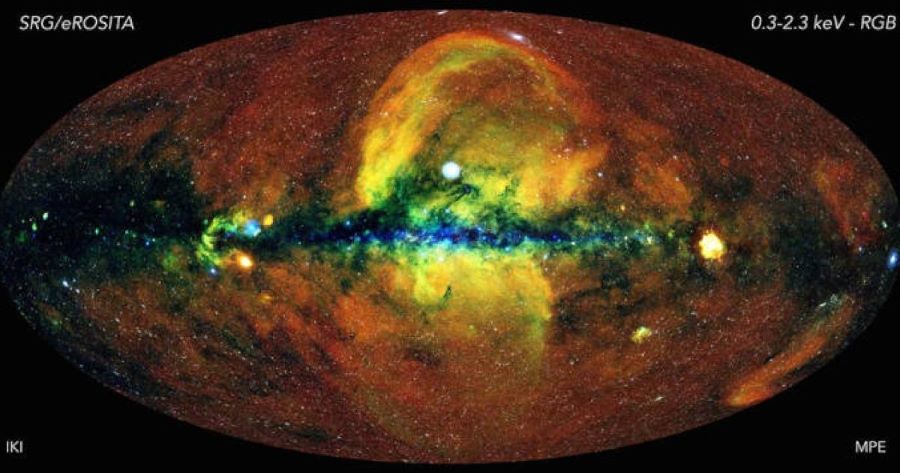Astronomers claim finding hidden “cosmic tunnel” connecting Solar System to distant stars
Fans of the sci-fi series Stargate have a reason to celebrate — scientists have discovered a kind of tunnel linking our Solar System with distant stars, and possibly there are even such tunnels. But they might want to temper their excitement, as this tunnel isn’t technological — it’s a natural cosmic formation, shaped by the forces of space itself.
Despite its appearance, scientists made no reference that this structure is a wormhole — and there’s no shortcut through space-time or instant travel between stars involved.
At least the astronomers who have discovered this “cosmic tunnel” are not claiming such a use. The tunnel linking our Solar System to faraway stars is, in fact, a vast pathway of hot, thin gas that stretches across space, according to the findings published in the magazine Astronomy & Astrophysics.

The study suggests that our corner of the Milky Way is part of a complex web of interstellar structures shaped by ancient stellar explosions.
A bubble around the Sun
The discovery centers on the Local Hot Bubble (LHB) — a large region surrounding our star system. For decades, scientists assumed this area was mostly empty, but new observations show it is filled with low-density, high-temperature plasma, the remains of supernovae that exploded millions of years ago.
Researchers at the Max Planck Institute used detailed X-ray data from the eROSITA telescope to map this space in unprecedented detail.
They found that our solar system sits inside this bubble of heated gas, roughly 300 light-years wide, and that the plasma inside varies in temperature and density across different directions.
More to read:
Study: our universe might be merging with parallel baby universes
A tunnel through stars
Among the study’s most striking findings is the identification of an “interstellar tunnel” — a channel of hot plasma extending from the Local Hot Bubble toward the Centaurus constellation. The tunnel isn’t a solid structure, but rather a vast corridor of rarefied gas that likely connects our region to other star-forming zones in the Milky Way.
Scientists believe this tunnel formed when multiple supernova explosions carved out cavities in the surrounding gas, which were later linked by stellar winds from young stars. The result is a network of interconnected “bubbles” — a kind of cosmic highway that allows energy, particles, and matter to flow between regions.
How supernovae shape our galaxy
Supernovae — the explosive deaths of massive stars — play a key role in sculpting the interstellar medium. Each explosion releases tremendous energy, heating nearby gas and pushing it outward to form vast cavities of hot plasma. Over millions of years, overlapping supernova remnants and stellar winds merge, shaping regions like the Local Hot Bubble and creating tunnels that connect them.
According to the study, these ancient explosions helped form not only the bubble we inhabit but also the broader network of interstellar pathways that stretch across the galaxy.
More to read:
[video] Scientists measure the expansion history of our Universe
The discovery challenges the idea that the space between stars is empty. Instead, it paints a picture of a living, connected galaxy, where the aftermath of past stellar events continues to influence the structure and motion of gas, dust, and cosmic rays.
The new data show that our solar system is part of a larger dynamic system — one that’s constantly being shaped by the forces of the Universe.







